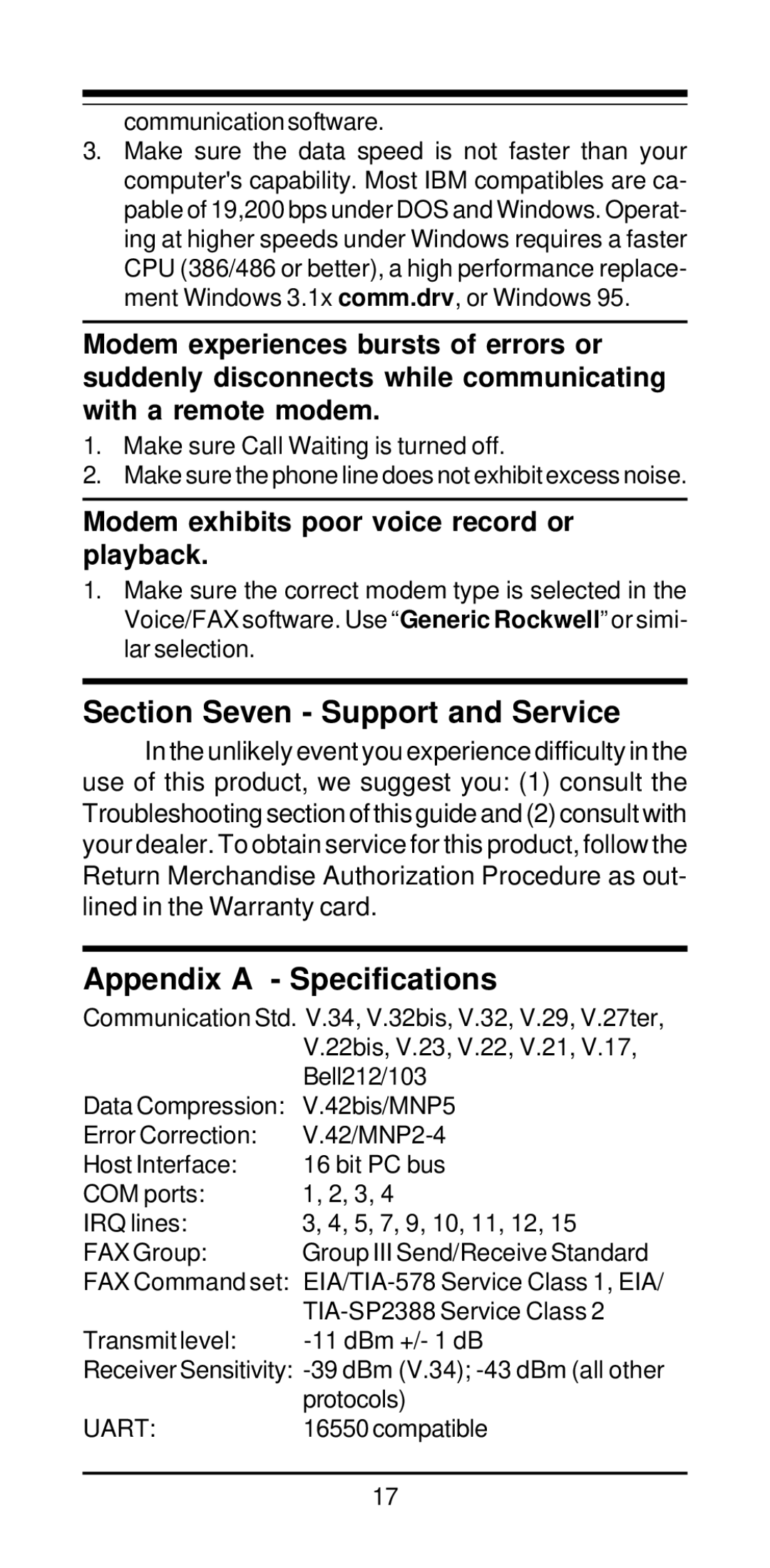
communication software.
3.Make sure the data speed is not faster than your computer's capability. Most IBM compatibles are ca- pable of 19,200 bps under DOS and Windows. Operat- ing at higher speeds under Windows requires a faster CPU (386/486 or better), a high performance replace- ment Windows 3.1x comm.drv, or Windows 95.
Modem experiences bursts of errors or suddenly disconnects while communicating with a remote modem.
1.Make sure Call Waiting is turned off.
2.Make sure the phone line does not exhibit excess noise.
Modem exhibits poor voice record or playback.
1.Make sure the correct modem type is selected in the Voice/FAX software. Use “Generic Rockwell” or simi- lar selection.
Section Seven - Support and Service
In the unlikely event you experience difficulty in the use of this product, we suggest you: (1) consult the Troubleshooting section of this guide and (2) consult with your dealer. To obtain service for this product, follow the Return Merchandise Authorization Procedure as out- lined in the Warranty card.
Appendix A - Specifications
Communication Std. V.34, V.32bis, V.32, V.29, V.27ter,
| V.22bis, V.23, V.22, V.21, V.17, |
| Bell212/103 |
Data Compression: V.42bis/MNP5 | |
Error Correction: | |
Host Interface: | 16 bit PC bus |
COM ports: | 1, 2, 3, 4 |
IRQ lines: | 3, 4, 5, 7, 9, 10, 11, 12, 15 |
FAX Group: | Group III Send/Receive Standard |
FAX Command set:
| |
Transmit level: |
Receiver Sensitivity:
UART:16550 compatible
17
